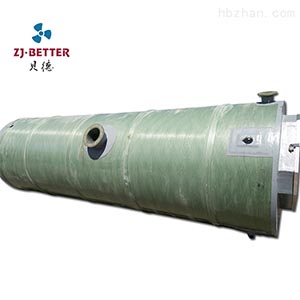The sewage lift pump station is a key process of the urban sewage treatment plant and plays an important role in the normal operation and operating costs of the entire sewage treatment plant. In daily operations, it is difficult to avoid unnecessary failures. To master the troubleshooting method of the sewage pump lift pump, you must know its working principle, structural structure, and necessary operational skills and mechanical maintenance knowledge. With this knowledge, you can find unusual conditions can quickly determine the fault.
1. Sewage pump lift pump does not produce water into the water: there is air in the tube and pump body. The sewage pump is not filled with enough water before starting. Sometimes it seems that the water has overflowed from the venting hole, but the pump shaft is not turned to completely discharge the air so that a little air remains in the inlet pipe or the pump body. The horizontal section of the inlet pipe that is in contact with the water pump should have a downward slope of more than 5%. The end of the inlet of the water pump is high, not completely horizontal; if it is lifted upward, air will remain in the inlet pipe, reducing the water pipe. And the degree of vacuum in the pump, having an effect upon absorbing water. The water pump packing has been worn out due to long-term use or the packing is too loose, causing a large amount of water to be ejected from the gap between the packing and the pump shaft bushing. As a result, external air enters the inside of the pump from these gaps, affecting lifting water. Due to the long-term potential of the inlet pipe, there is an L hole in the corrosion of the pipe wall. After the pump works, the water surface is continuously falling. When these holes are exposed to the water surface, the air enters the inlet pipe from the shovel. There is a crack at the inlet pipe bend, and a slight gap between the inlet pipe and the pump connection may cause air to enter the inlet pipe.

2. The speed of the residential sewer lift station is too low. Human factors: Some users are equipped with other motors because of the original motor damage: other motor drives, resulting in low pump flow, low lift or even no water. The mechanical failure of the pump itself: the impeller and the pump shaft tightening nut are loose or the pump shaft is deformed and bent, causing the impeller to move, directly rubbing against the pump body, or the bearing is damaged, which may reduce the pump speed. The maintenance of the power machine is not working: the motor is demagnetized due to the burning of the winding, the number of winding turns, the wire diameter, the wiring method is changed during maintenance, or the fault is not completely eliminated during maintenance, and the pump speed is also changed.
3. The suction stroke is too large. Some water sources are deeper, and some water sources have a flatter outer surface, ignoring the allowable suction of the pump, which results in less water absorption or no water absorption at all. The vacuum that can be established at the suction port of the pump is limited. The absolute vacuum suction is about 10m water column height, and the pump cannot establish an absolute vacuum, and the vacuum is too large so that the water in the pump is easily vaporized. It is not good for pump work. Therefore, each centrifugal pump has its maximum allowable suction stroke, generally between 3 and 8.5 m. When installing the water pump, it is convenient and simple to use.
4. The resistance loss of the water inlet and outlet pipes is too large. Sometimes the vertical distance from the reservoir or water tower to the water surface is slightly smaller than the pump lift, but it will still result in a small amount of water. The reason for avoiding it is that the pipeline is too long, there are many bends in the water pipe, and the flow loss of the water flow in the pipeline is too large.
The influence of other factors. The bottom valve does not open: usually because the pump is left too long, the bottom valve gasket is stuck, and the bottom valve without the gasket may rust. The bottom valve screen is clogged, or the bottom valve is potentially clogging in the sludge layer in the water. The impeller wear is severe: the impeller blades wear over long-term use, which affects the performance of the pump. Failure or blockage of the gate or check valve can result in reduced flow or even no water. The leakage of the outlet pipe will also affect the amount of water pumped.
